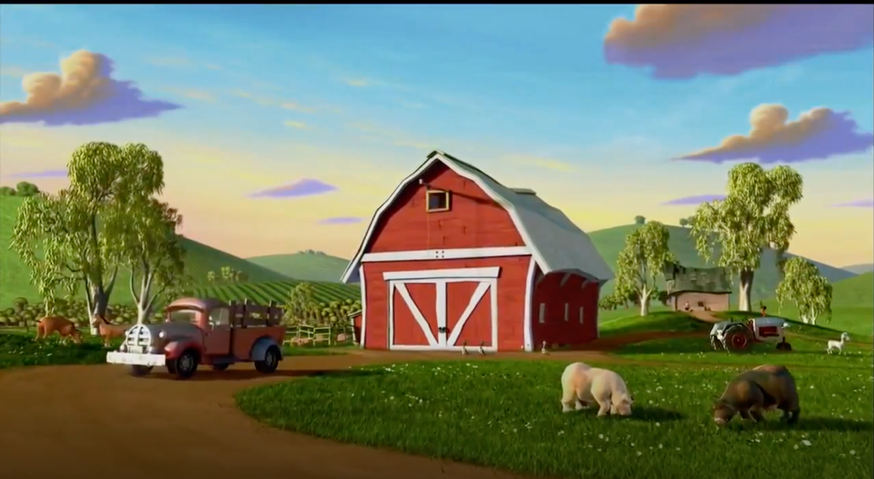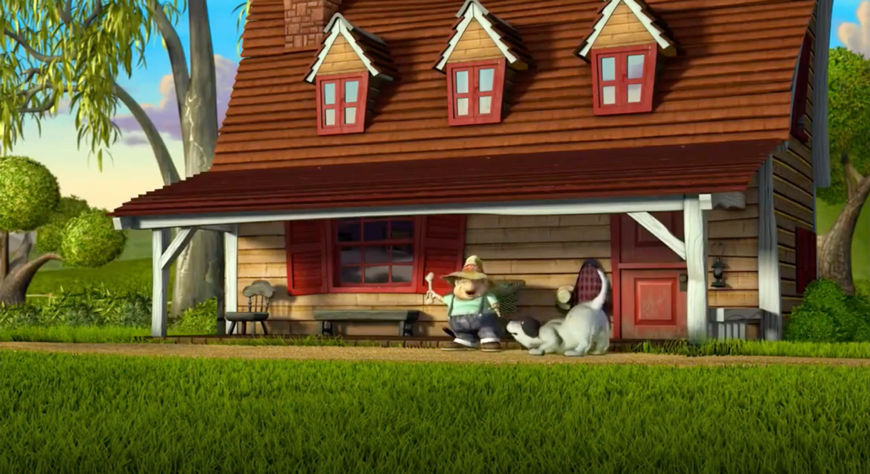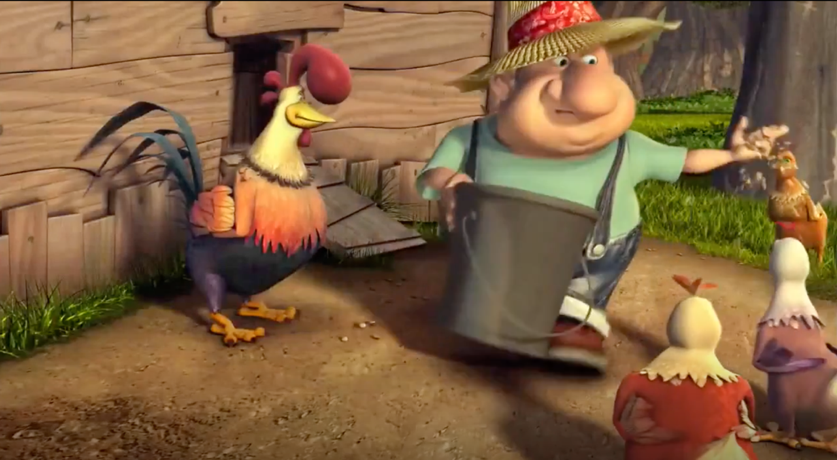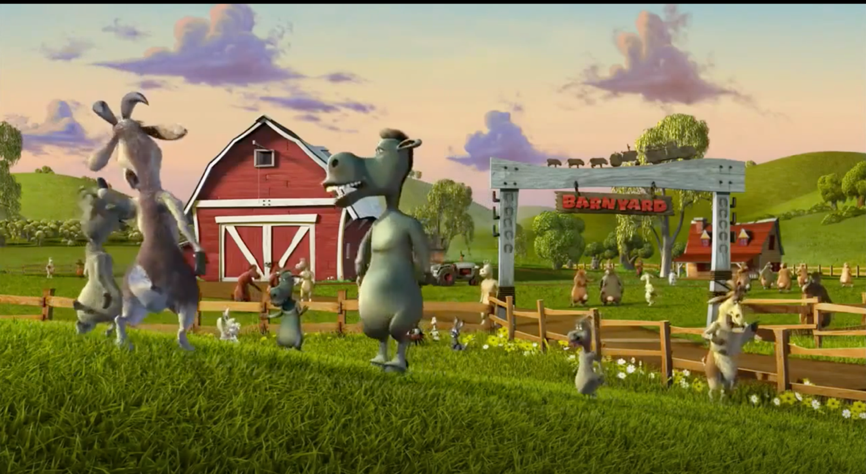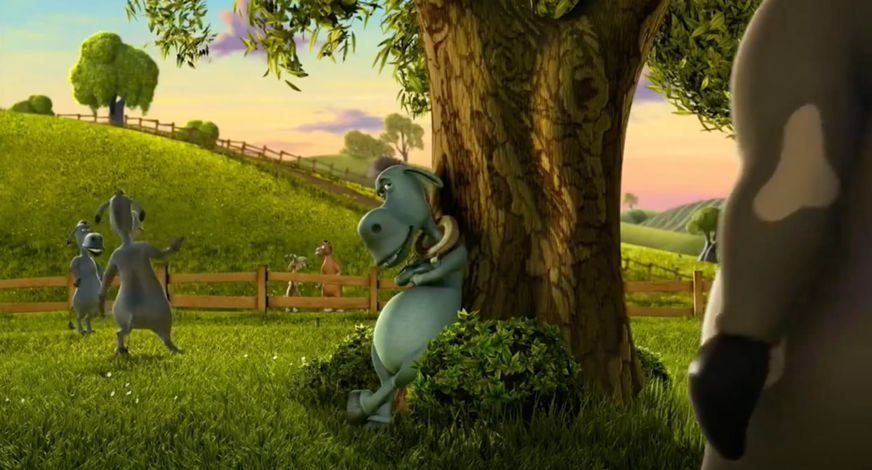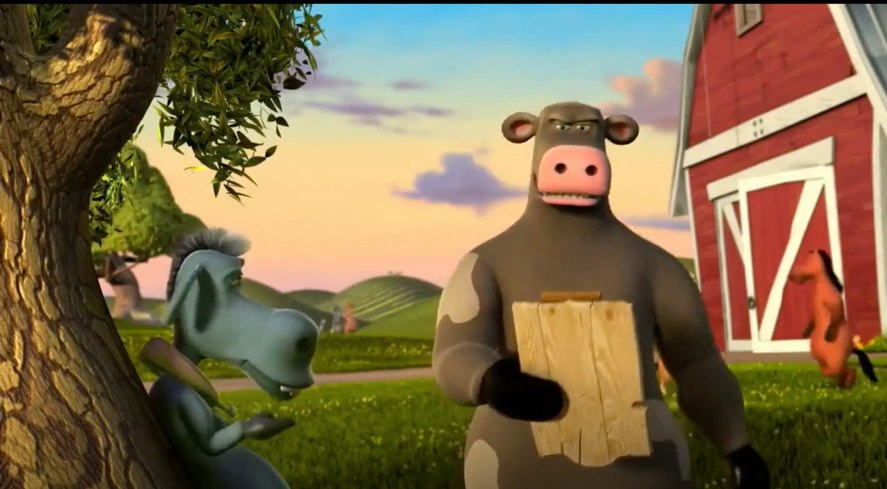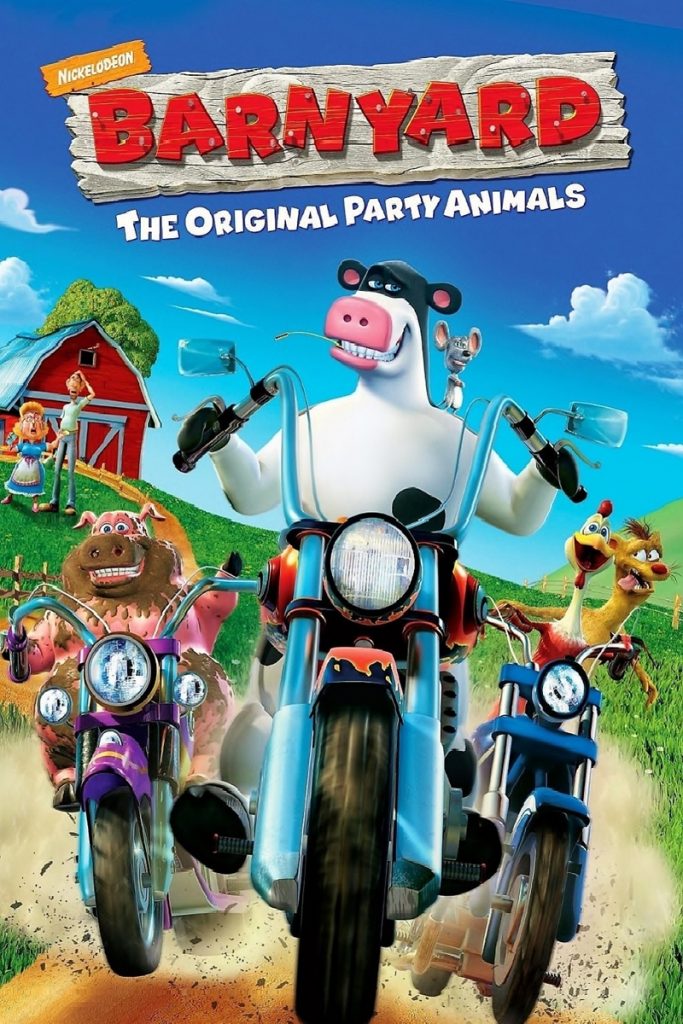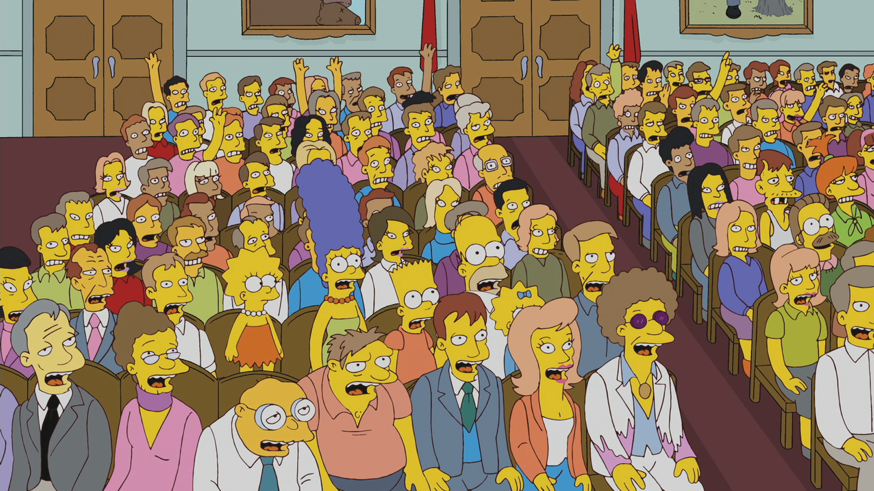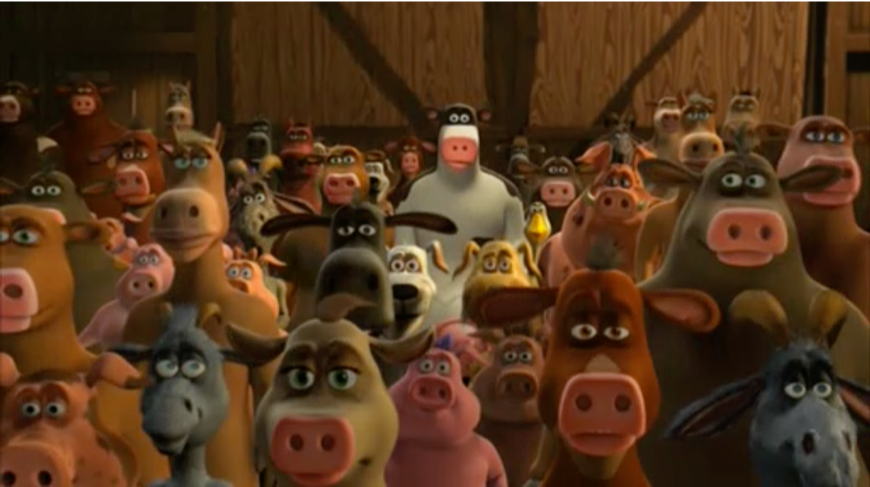Steve Oedekerk’s Barnyard uses witty puns and gags in order to satirise the idea of the animal as a fixed definition, in that an animal can never truly be anything more than a representation of the attributes that humanity typically associates with its species.
This is evident from the opening scene which uses a sort of undercover reality tv show format in order to expose the secret, or unseen world of animals. Oedekerk does this by juxtaposing a scene in which the audience is presented with the idea of the typical farmyard setting that consists of a farmer (voiced by Fred Tatasciore) tending to his animals, with a scene in which the animals rise up on their hind legs and interact with each other to create this idea of a ‘secret’ animal community that exists and sustains itself when the farmer is away. (See images below)
Firstly, Oedekerk presents an archetypical farmyard setting by showing the farmer playing fetch with his dog Duke which asserts the master/subordinate relationship through the cliché of a dog being a man’s best friend. This typical portrayal of the human/animal relationship is reaffirmed in the next two shots as the farmer feeds his chickens and Miles the mule, which is in line with the idea that the human is responsible for the feeding and keeping of his livestock and therefore provides the assumption that the animals are reliant upon him.
Oedekerk quickly subverts the archetypal farmyard setting once the farmer leaves by having the animals stand up on their hind legs and interact with one another in a typically human way (see images). This disruption is not only humorous, but also satirical because it directly contrasts the farmers authority over his animals that was established in the previous scene by having the animals stand up and occupy the same physical space that the farmer had in the previous scene.
This allows him to physically show the audience that a subversion of the power dynamic of human over animal has occurred. The contrast between scenes playfully pokes fun at the idea that humanity is apart or superior to animals because man can walk on two legs. By having the animals walk on their hind legs, they occupy the same space in shot as the farmer previously did which provides the audience with a visual cue that the farmer has less authority over his livestock than he imagines. Moreover, the physical shift is extended by the sudden change in non- diegetic soundtrack as the movie flips from a country song, to a soundtrack that is more fitting with the rock genre (which conveys ideas of rebellion against the norm).
The scene flips the idea that the animal is reliant upon the human to be in charge through the character of Ben the bull. Instead of the farmer, it is Ben (the bull shown holding the clipboard) that is established as the authority figure from the first scene. This is done firstly through the use of a clipboard as a prop to symbolise his control of the order of the farm, and secondly by the fact that Ben calls for a community ‘meeting’ which creates a sense of society and of an internal hierarchy (with Ben at the top instead of the farmer) which challenges the human above animal binary, instead by presenting a multi-level society in which some animals are in charge of the protection of other animals.
In addition, the meeting furthers the idea of the animal society as self-reliant and self-sustaining with rules and order when Ben prohibits the buying and selling of ‘human articles’. This plays the idea of the human as ordered reasonable, and as the animal as wild and uncontrollable by presenting the animals as having a set of rules to live by that is separate from any human authority. Moreover, this is aided by the way in which the animals are positioned on screen which for me was reminiscent of scenes such as an episode of the Fox Tv show The Simpsons titled ‘To Surveil with Love’ in which the characters hold a town hall meeting to discuss the running of their society (see images). Here, Oedekerk is taking typically human behaviours and attributing them to animals in order to satirise humanities reliance on social rituals such as these types of meetings as the characteristics of civilised behaviour.
[1] Oedekerk, Steve, Barnyard (Nickelodeon Movies, 2006)
[2] Groening, Matt, The Simpsons, To Surveil With Love (Fox Broadcasting, 2012)
